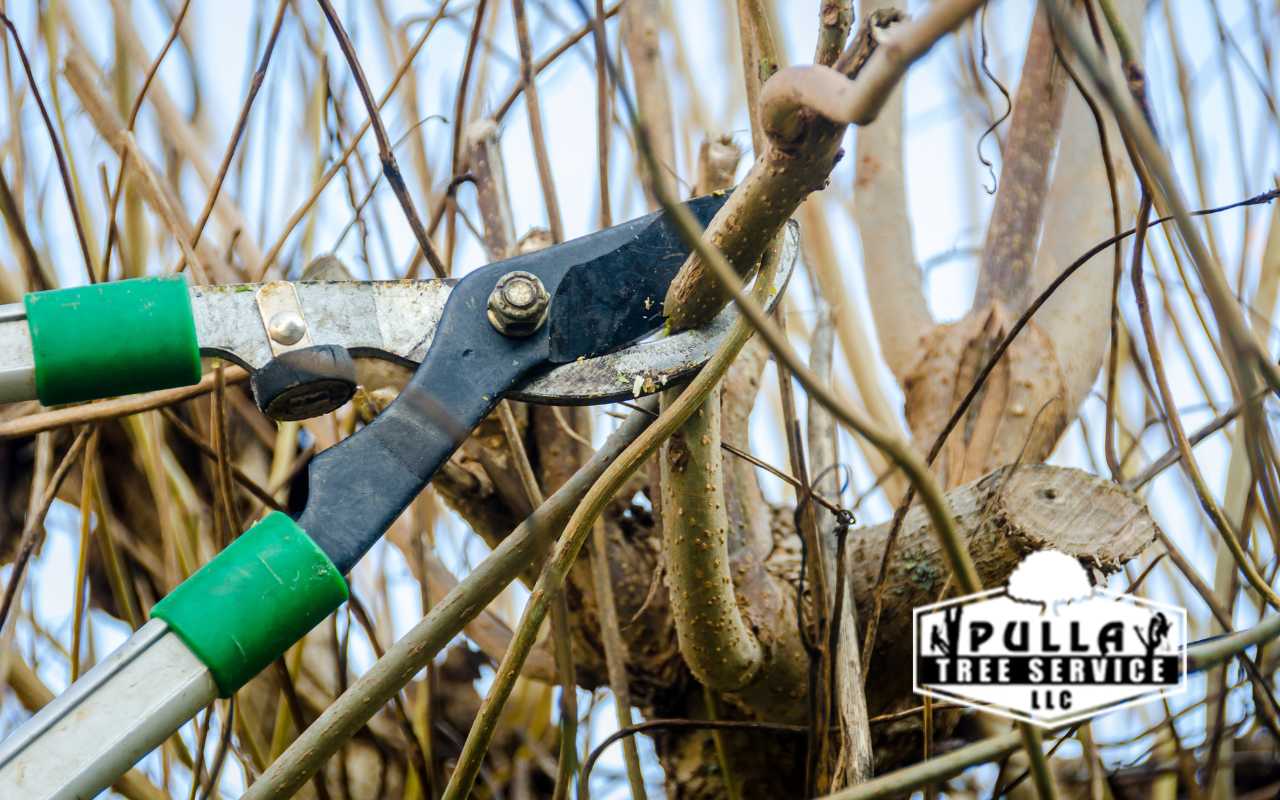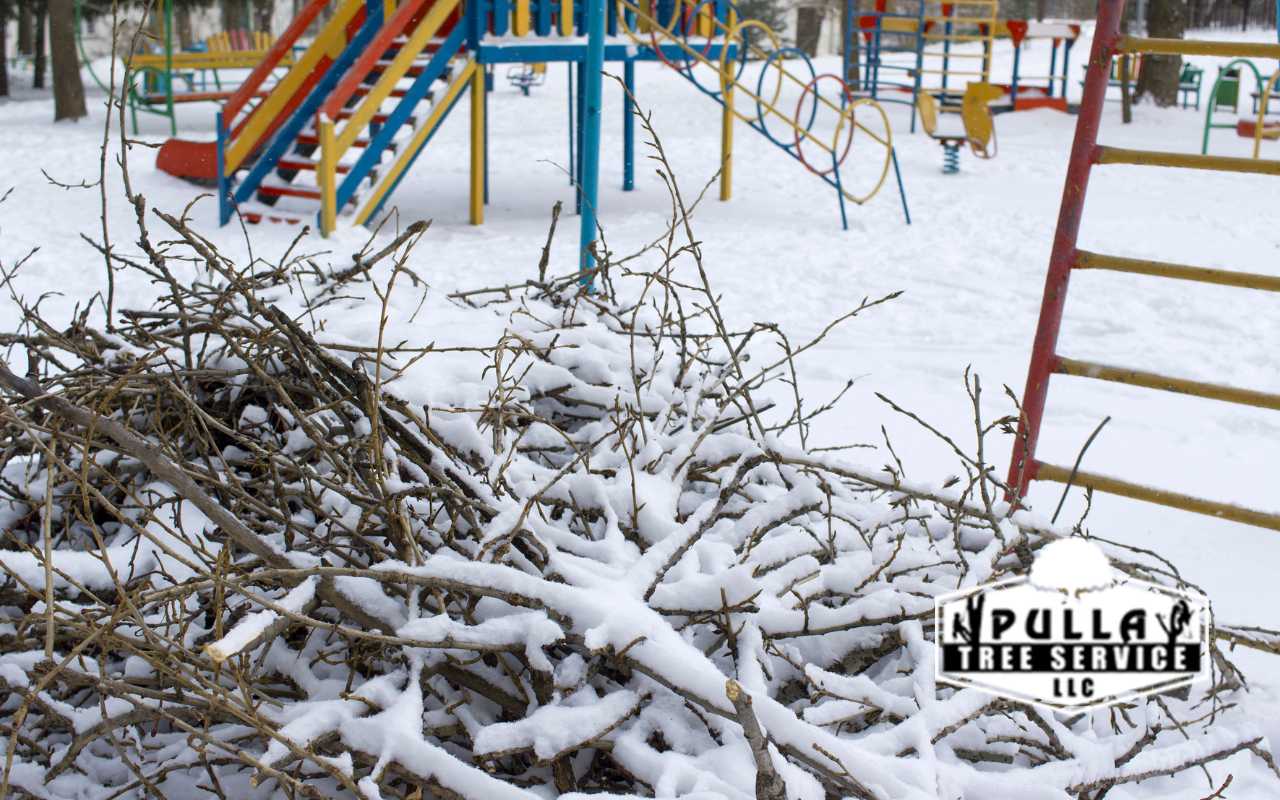
- Fri, Dec 2023
- |
- Pulla Tree Service
Can you trim trees in the winter? This question often puzzles many homeowners and garden enthusiasts as they strive to maintain the health and appearance of their trees. While the colder months might seem unconventional for tree maintenance, winter presents unique tree trimming and care opportunities.
When trees are dormant, this period can be ideal for making precise cuts and shaping without stressing the tree. In this comprehensive guide, we will explore why winter might be the best time to trim your trees, its benefits, and how to do it correctly. Understanding the nuances of winter tree trimming can ensure the longevity and vitality of your trees, enhancing your landscape even in the coldest months.
Maximizing Tree Health: Can You Trim Trees in the Winter?

Yes, you can trim trees in the winter. It’s often a good time because trees are dormant, which reduces stress on them. Winter pruning can also prevent disease spread and makes it easier to see and shape the tree’s structure without leaves in the way.
Winter Tree Trimming: Can You Trim Trees in the Winter?
Benefits of Winter Trimming:
Less Stress on Trees: Trees are less susceptible to stress from pruning in their dormant state.
Disease Prevention: Trimming in winter reduces the risk of spreading diseases, as many pathogens are inactive.
Better Visibility: Identifying which branches need pruning without foliage is easier.
Enhanced Healing: Wounds from pruning heal faster in the dormant phase, preparing trees for robust growth in spring.
Best Practices for Winter Trimming:
Identify the Right Trees: Not all trees are ideal for winter trimming. It’s crucial to know which species benefit the most from winter pruning.
Use Proper Tools: Ensure that pruning tools are sharp and clean to make precise cuts and prevent disease transmission.
Pruning Techniques: Learn the correct cutting techniques to avoid damaging the tree.
Safety Measures: Always prioritize safety, especially when dealing with large trees or higher branches.
Common Misconceptions about Winter Trimming:
Myth: Trees Can’t Be Pruned in Winter: This is a misconception. Many trees benefit from being pruned during their dormant phase.
Myth: All Trees Should be Trimmed in Winter: Not all species require or benefit from winter pruning. Research or consult an expert for specific tree types.
When Not to Trim in Winter:
Avoid Extreme Cold: Trimming during very cold spells can harm trees. Wait for milder winter days.
Species-Specific Needs: Some trees, like maples, might bleed sap if pruned in late winter. Understand the specific needs of your trees.
Tips for Winter Tree Trimming:
Plan Ahead: Before the onset of winter, assess your trees to identify which ones require trimming.
Choose the Right Time: Aim for mid-winter to late winter for trimming, avoiding the coldest periods.
Focus on Safety: Use proper safety gear and consider hiring professionals for large or high branches.
Prune Selectively: Remove only dead, diseased, or overgrown branches to maintain the tree’s health and shape.
Exciting Facts About Winter Tree Trimming:
Encourages Spring Growth: Winter trimming can stimulate new growth in the spring.
Reduces Pest Problems: Removing winter-infested branches can help control pest populations.
Historical Practices: For its benefits, winter tree trimming has been practiced for centuries in various cultures.
Questions to Consider When Trimming Trees in Winter:
- Is the tree species suitable for winter trimming?
- Are the weather conditions favorable for pruning?
- Do I have the necessary tools and knowledge, or should I hire a professional?
- What are my goals for pruning (health, aesthetics, safety)?
Pulla Tree Service LLC: Your Winter Tree Care Experts
As we wrap up our guide on “Can you trim trees in the winter?”, it’s clear that winter tree trimming is not just feasible but often highly beneficial. However, it requires specific knowledge, tools, and safety measures. That is why we recommend that a professional company offer you the necessary services!
